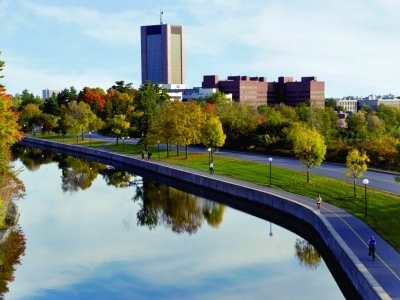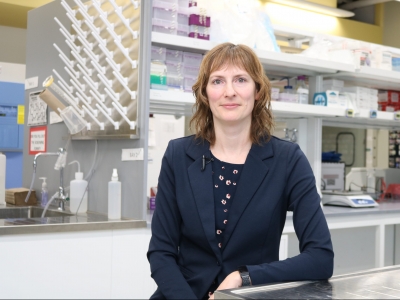–Written By Ty Burke
When Canada’s Paralympic ice hockey team builds its next Olympic champion from grassroots players across Canada, they’ll have an ace in the hole — an enhanced understanding of the sport’s unique biomechanics.
 Carleton biomedical engineering PHD candidate Alicia Gal is partnering with Hockey Canada on a longitudinal study of how the sport’s seated style of skating actually works.
Carleton biomedical engineering PHD candidate Alicia Gal is partnering with Hockey Canada on a longitudinal study of how the sport’s seated style of skating actually works.
Seated on a sledge, para-ice hockey players push themselves across the ice using handheld picks — a dramatically different motion from upright hockey’s striding style. Para-ice hockey’s skating motion more closely resembles double-polling in cross-country skiing.
So the wealth of biomechanical research for upright ice hockey is of little use in teaching new athletes the sport, and para-athletes’ individual physical uniqueness adds a layer of difficulty.
“There’s a higher level of complexity to biomechanical research for para-athletes,” Gal says. “Each athlete is different, and has a unique set of limitations. So each athlete will skate differently. We’re seeking to establish a general guideline.”
Gal’s research began with a naïve population — able-bodied athletes who had never participated in the sport. This replicates how para-ice hockey players often come to the sport: fresh out of rehab and seeking a way to have an active lifestyle.
“Skating is the foundation of the sport,” she says. “If a player can’t move themselves in the sledge, they can’t play.”
At the University of Ottawa’s Human Movement Biomechanics Laboratory (Dr. Mario Lamontagne and Dr Daniel Benoit ), Gal mapped the biomechanics of sledge skating using force plates, electromyography — a technique that captures electrical activity in muscles – and motion capture. Infrared cameras tracked athletes’ motions using reflective markers on participants’ bodies.(The biomedical engineering programs at Carleton U and the U of O are able to share resources as they are both part of the Ottawa-Carleton Institute for Biomedical Engineering.)
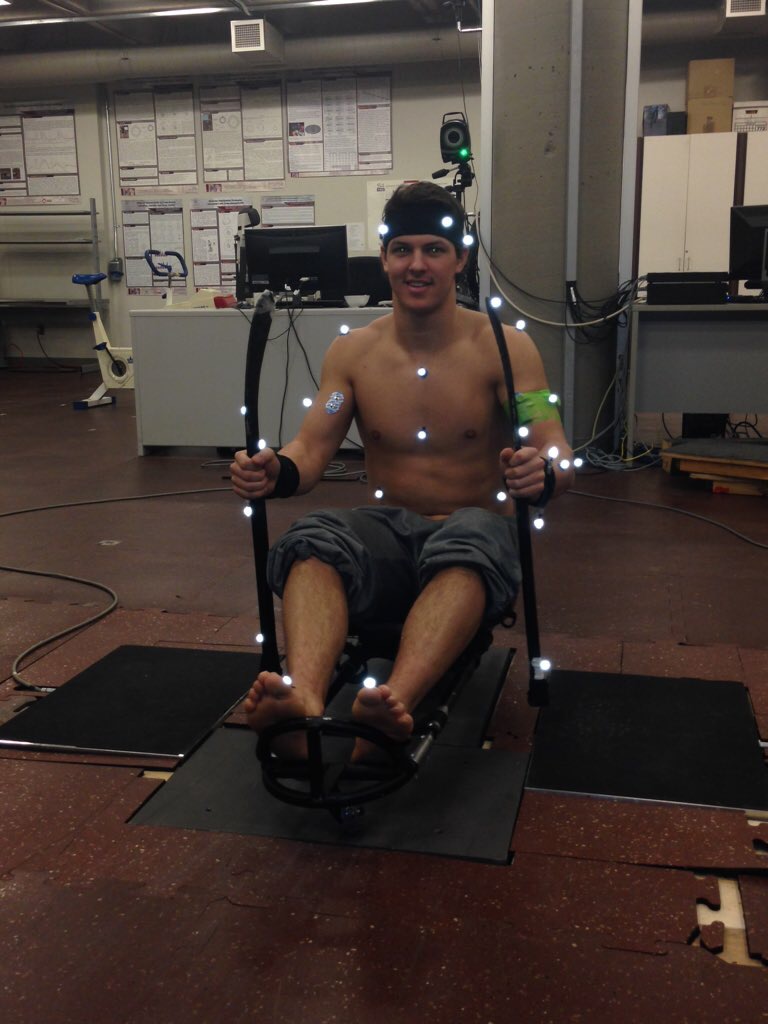
“They look like tiny disco balls,” Gal says. “We put these little markers on bony landmarks. So when they’re in the motion capture, participants’ movements are regenerated on a computer screen. When you connect them, it looks like a stick person. From this, we could see that balance is a major limitation to performing symmetry in the stroking cycle. We studied the difference between the start and mid-stroke. We also found that not only can you produce two different styles of strokes from left to right, but you can actually successfully pull yourself across the ice, where mechanically and mathematically it is more advantageous to push yourself.”
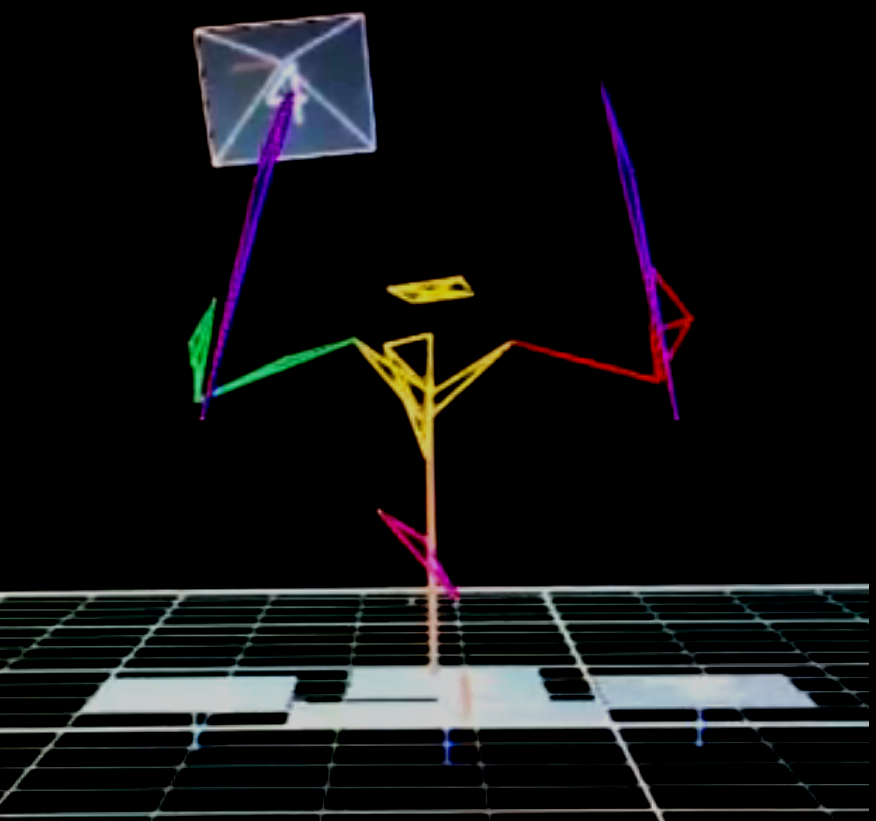
Next, Gal’s research will train its focus on elite athletes: members of Team Canada. With their expertise in the very challenging sport, Gal will be able to move her research out of the lab and onto the ice.
“Basically, we’ll be doing the same study we did with naïves, but with members of the current national team. We’ll be able to see where this range is starting from. It sounds weird, but the naïve population is kind of our general standard, then, when we put our experts in, we’ll see where the experts vary and it shows us the vast range of abilities.”
On the ice, Gal will measure performance using inertial measurement units – a device that gathers data on forces and angles with accelerometers and gyroscopes. This will produce 3-dimensional data on skating and balance in the sport-specific environment.
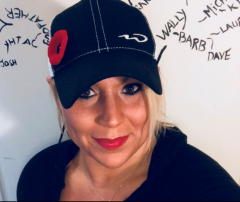
Engineering student Alicia Gal
Her connection to the sport is a personal one. When a high school friend was paralyzed, Gal sought to connect him with a local coach, to help him stay healthy.
“He was an all-around athlete – a really good hockey player — and he broke his neck,” she says. “I wanted to help with his rehab, and I knew the local para-ice hockey coach. I introduced them, and as I was looking into the sport, I realized that nobody actually researches this. There needs to be research.”
Gal hopes it will help Hockey Canada develop elite players, but also grow the sport at the grassroots level everywhere.
“On top of there being an enormous gap between ice hockey and sledge hockey biomechanical research, there’s also an enormous gap between a community-level para-ice hockey player, and a national-level player,” she says. “We’re trying to close the gap in biomechanical research, and narrow the gap between someone just starting out and a national team-level player.
A better understanding of the sport’s biomechanics will help devise on-ice drills and off-ice training, speeding new players’ adoption of the sport, and enabling them to get better, faster.
“There are some key things that can be standardized,” Gal says, “then, slightly adjusted for the individual. So that maybe a person who just needed that extra tweak at the beginning gets it, and they’ll be able to excel, and maybe even become our next gold-medal winning player.”
Gal was selected as a finalist for the Young Investigators Award at the Own The Podium 2017 SPort INnovation (SPIN) Summit. She is also an NSERC READi trainee, supervised by Dr Adrian Chan, READi director and assistant vice-president (Academic) and Dr Dean Hay from the Biomechanics and Ergonomics Laboratory at Nipissing University.
The Paralympic Winter Games will take place in PyeongChang, Korea in March, 2018. Click here to view a schedule of the events.
Wednesday, January 3, 2018 in News, Research
Share: Twitter, Facebook
